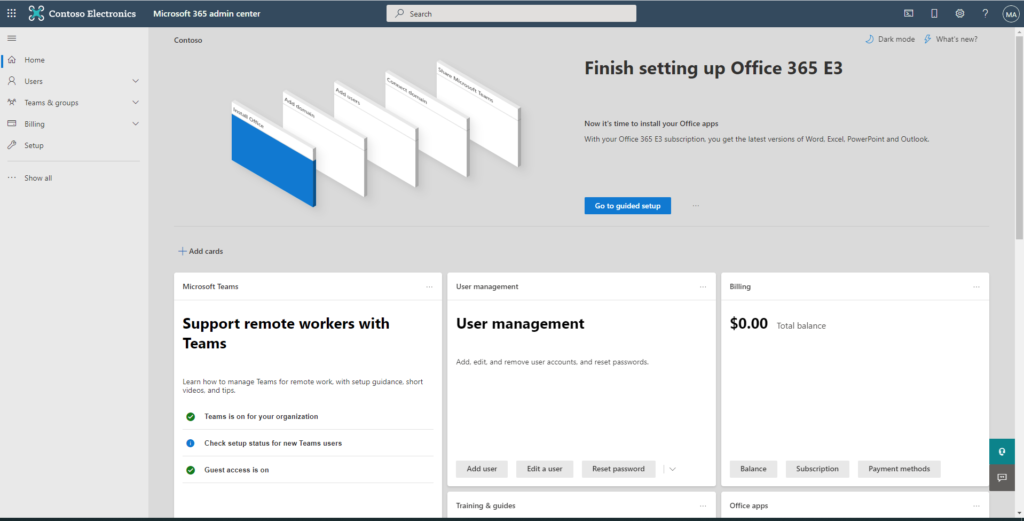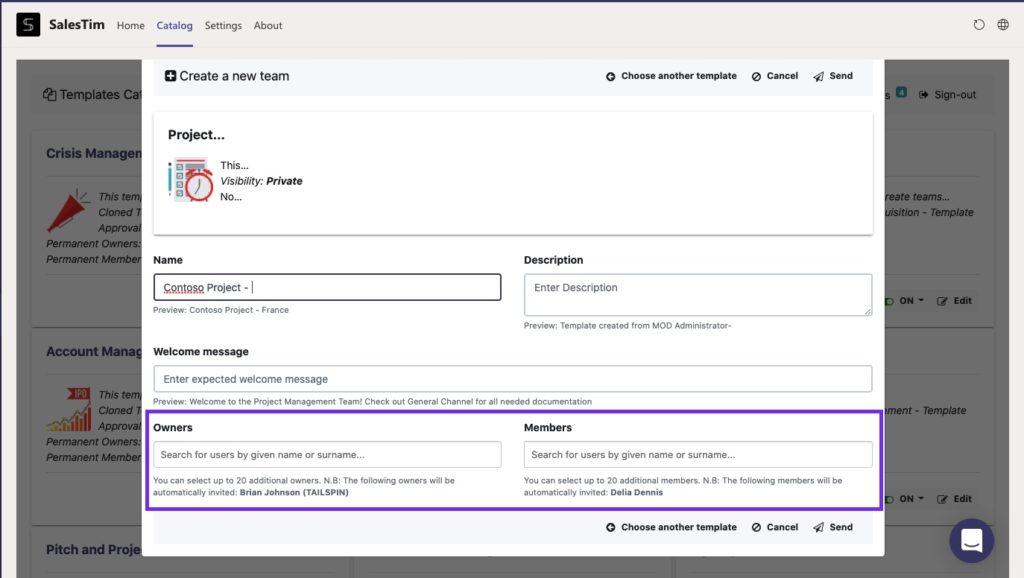Maintaining and implementing a systematic working environment are some of the common obstacles that business executives and managers face. Fortunately, the increase in the emergence of technological solutions has simplified ways of communicating and collaborating seamlessly in teams. One of the most popular providers of such solutions is Microsoft. It is famous in many organizations worldwide for the full-feature experience it offers.
Microsoft tools are very unique as they are interconnected through mediums, one of them being Microsoft 365 groups. It is extremely important to have access to certain productivity tools, allowing individuals to complete their tasks easily from anywhere. And Microsoft 365 groups do that.
Microsoft 365 Groups is a membership service that works with the Microsoft 365 tools you use already so you can collaborate with your teammates when writing documents, creating spreadsheets, working on project plans, scheduling meetings, or sending email.
Now, let’s dig deeper into Microsoft 365 groups and understand how your teams can leverage them.
What is Microsoft 365 Groups?
Microsoft 365 Groups is an online service that offers centralized membership for various interconnected Microsoft products all in one place. Also known as Microsoft’s productivity suite, the cross-application membership service provides a wide range of products, with a purpose of enabling individuals to integrate and collaborate in a team, sending emails, editing shared documents, elaborating on potential projects, scheduling conferences, and more. In addition, groups in Microsoft 365 give the user the capability of choosing the individuals to easily collaborate with and share resources such as an online calendar or a document library.
Manually granting access to the uploaded resources to the new group members shouldn’t be an issue; the newly added individuals will automatically be able to attain the folders and files to get the job done, like the rest of their peers. Furthermore, Microsoft 365 groups provide an upgraded, user-friendly experience for using the old distribution list model and shared mailboxes, as group members can collaborate and work together in shared workspaces productively. Microsoft 365 suite is ideal for seamless collaboration for completing projects with teammates without the need of commuting to a shared office space.
Microsoft 365 groups vs. Office 365 groups
In March 2020, Microsoft announced the rebranding of Office 365 to Microsoft 365. Along with that came the name modifications of subscriptions for small and medium-sized organizations, as well as the enterprise-level applications. Despite the fact that there were no major differences between the two subscriptions, it is certain that Microsoft 365, being the latest version, will presumably expose new features, depending on the package.
Breaking down Microsoft 365 groups
Microsoft 365 groups are used by individuals across the business for various operations ranging from group chats and emails, to sharing files, creating tasks, and scheduling events. In addition, you can create groups to collaborate with people who can’t access Customer Engagement. Therefore, you can invite individuals to join the group you created and easily share files and conversations.
By default, any user can create a group unless you pose restrictions, which will prevent users from users creating SharePoint sites, Planners, teams, Outlook group calendars, Stream groups, Yammer communities, Shared libraries in OneDrive, or shared Power BI workspaces. So, unless you have security reasons, it doesn’t make sense to limit group creation.
Pre-existing Requirements
In order to collaborate using Microsoft 365 groups, the user must:
- Have an Office 365 subscription that features Exchange Online and SharePoint Online
- Make use of the group’s solution for Customer Engagement units
How to create Microsoft 365 groups
There are several ways of creating Microsoft 365 groups. Users can create groups through various Microsoft apps that they are using such as Teams, Yammer, Outlook, SharePoint, OneDrive, etc. You can learn more about the different ways of opening Microsoft 365 groups here.
Admins, on the other hand, can also use the admin center to create or delete groups, add or remove members, and making modifications to how they work. Let’s see how you can do these configurations.
Creating a group
If you wish to create a group, you should:
#1 Go to the Microsoft 365 admin center

#2 From the menu on the left, choose Teams and Groups.

#3 Click on Active teams & groups. To create a new group, click on the Add a group button.

#4 Choose a group type and from all the choices, select the first one Microsoft 365. While you’re there, you can also familiarize yourself with the other three options.

#5 When you select a group type, you’ll need to fill out a short form to complete the creation of the group. Choose an email address for the group and a privacy option and decide whether it will be added to Teams. You have to choose one or more individuals as owners, with a purpose of managing the group. Only designated owners can delete emails from the Group inbox.

#6 Once you’ve revised all settings, select Create group
Adding and removing a member to the group
- Go to Active groups in the admin center
2. Choose a group name
3. On the Members tab, choose View all and manage members then press on Add members
4. Add the member of your choice and choose Save
If you wish to remove a member, after you select View all and manage members, you will find the Remove members button. Once the member is selected, remove them and press Save.
Permanently deleting a group
- In the admin center, hover on Group and press on Groups
- Search for the group
- Click on the checkbox near the group name
- Press Delete team
Collaborating in Microsoft 365 Groups
As already mentioned, Microsoft 365 groups enable collaboration. The centralized membership that is created via Microsoft 365 groups can give a group of people access to the following resources:
- A shared Outlook inbox
- A shared calendar
- A SharePoint document library
- A Planner
- A OneNote notebook
- Power BI
- Yammer (if the group was created from Yammer)
- A Team (if the group was created from Teams)
- Roadmap (if you have Project for the web)
- Stream
Each of these resources enable a key part of collaboration. Outlook, for example, is made for communication, calendar is self-explanatory and SharePoint is the Holy Grail of document management. You can share your notes with your teammates through the shared OneNote notebook that allows several users to write notes simultaneously, and it connects all users’ modifications.
Besides SharePoint, you can also share documents with the rest of the members of the group via OneDrive. Once you upload a file to the group’s OneDrive for Business page, it is automatically shared with all team members, as well as newly added individuals.
How are Microsoft 365 groups managed?
Within each group, there are three main roles:
Owners – we’ve touched upon this role briefly when talking about how to create and configure groups. Owners have the ability to add or remove members, delete conversations from the shared inbox or change different settings about the group. They can also rename the group, update the description or picture and more.
Members – users who are members can access all the resources available to the group but they can’t modify any settings. Members can also invite guests to join the group but as an owner or admin, you can disable this feature can.
Guests – these are users who are not part of your organization but have temporary access to the resources.
Microsoft 365 Groups and Teams
I am sure after reading the previous section, most of you are thinking “but isn’t it what Microsoft Teams is for?!” While it may sound like the two are similar, they are very different. Microsoft Teams is a product, whereas Microsoft 365 groups are essentially a centralized membership tool. As a matter of fact, Microsoft Teams is one of the products/resources that is available to Microsoft 365 groups.
In other words, Microsoft 365 groups serve as a team management membership for newly established teams, and relevant services, such as SharePoint and Power BI workspace, come along as well. Whenever you create a Microsoft Teams account, a Microsoft 365 group is automatically created.
Take advantage of Microsoft 365 groups with Collaboration templates
Microsoft Teams templates are preconfigured structures of a team specifically designed to meet the user’s needs. Users can develop customizable templates that will be used to create new teams in a matter of seconds.
With SalesTim you can create Collaboration templates and apply governance policies to the newly created teams and their corresponding Microsoft 365 groups.
For instance, you can apply a Naming convention to Microsoft 365 group email address that can dynamic attributes from Azure AD.

You can also make sure specific people form a part of future teams and, therefore, groups at the template level through Membership policies.

Additionally, you can enable sensitivity labels that will apply to groups.

As Microsoft 365 groups provide a wide range of products that complement each other, the service is an important asset for businesses to excel in their internal organization productivity, communication, and collaboration. Being a cloud-based solution, the interconnected products allow users to access company-wide data all in one place. Additionally, individuals can perform numerous operations and complete their tasks using the tools provided by Microsoft suite services, from scheduling meetings to sharing documents. Business leaders can ensure to maintain their productivity in an efficient digital workspace using Microsoft 365 groups and Microsoft Teams.
Learn more about Teams governance
How to Restrict Users from Creating New Teams in Microsoft Teams
Microsoft Teams Governance Best Practices: Top 15 Points to Consider

